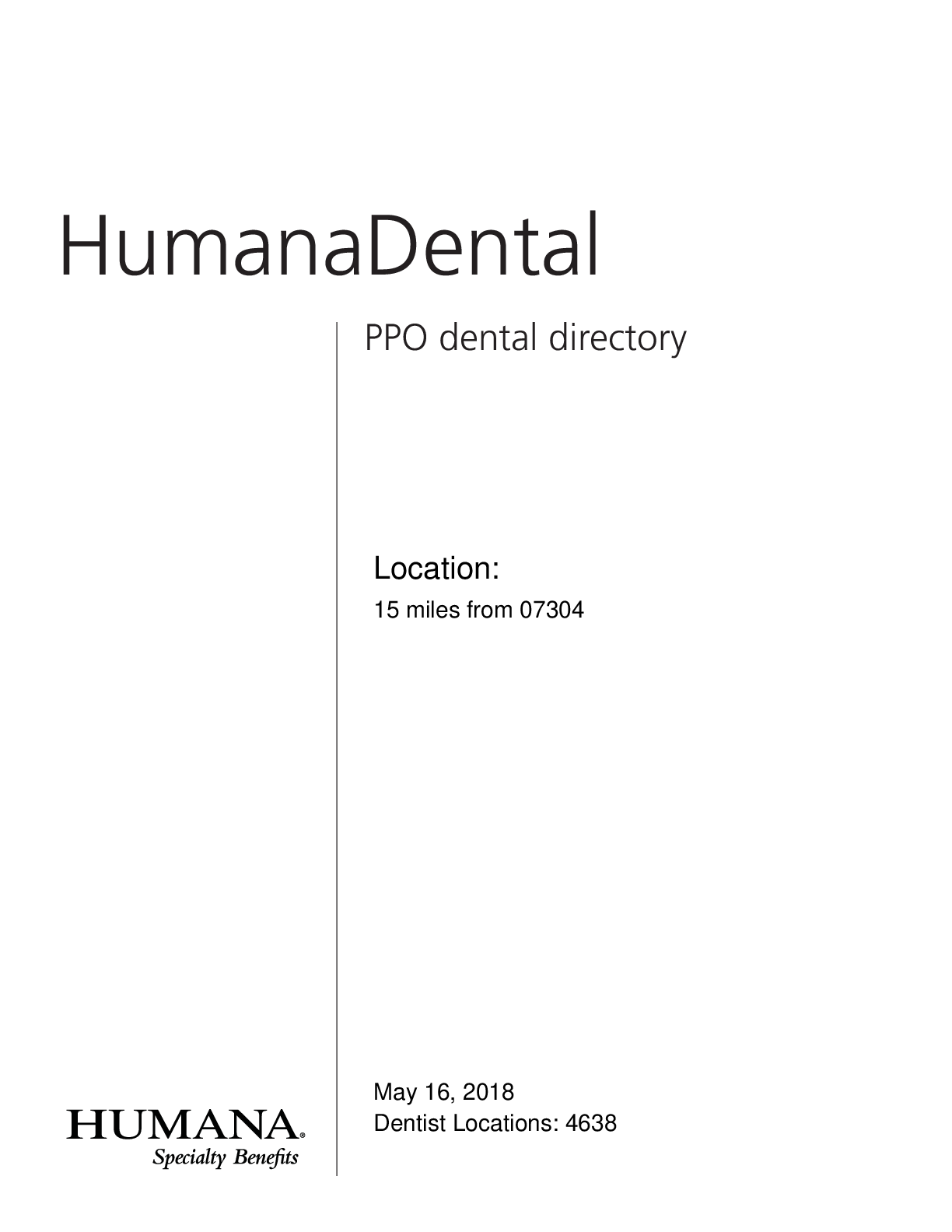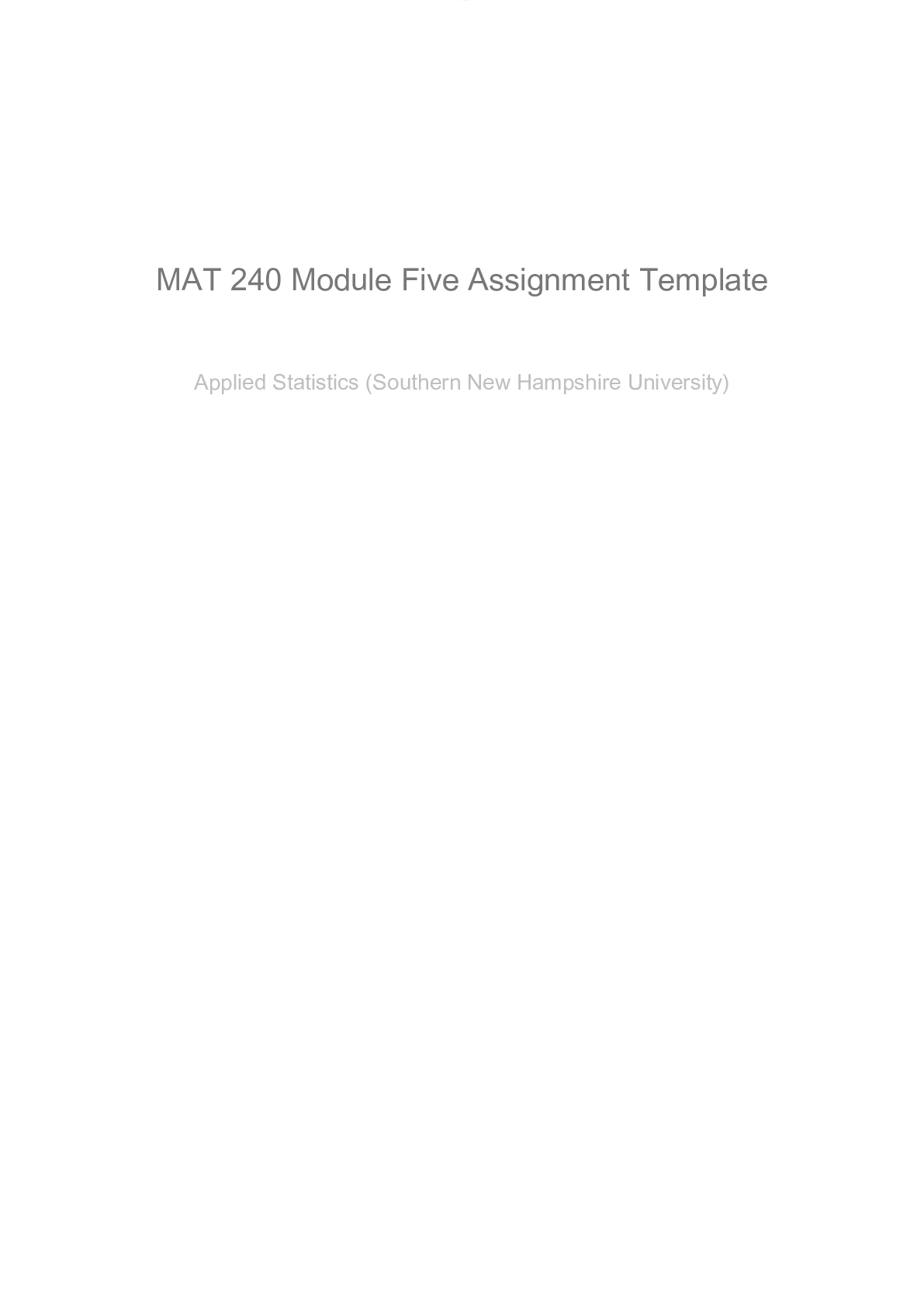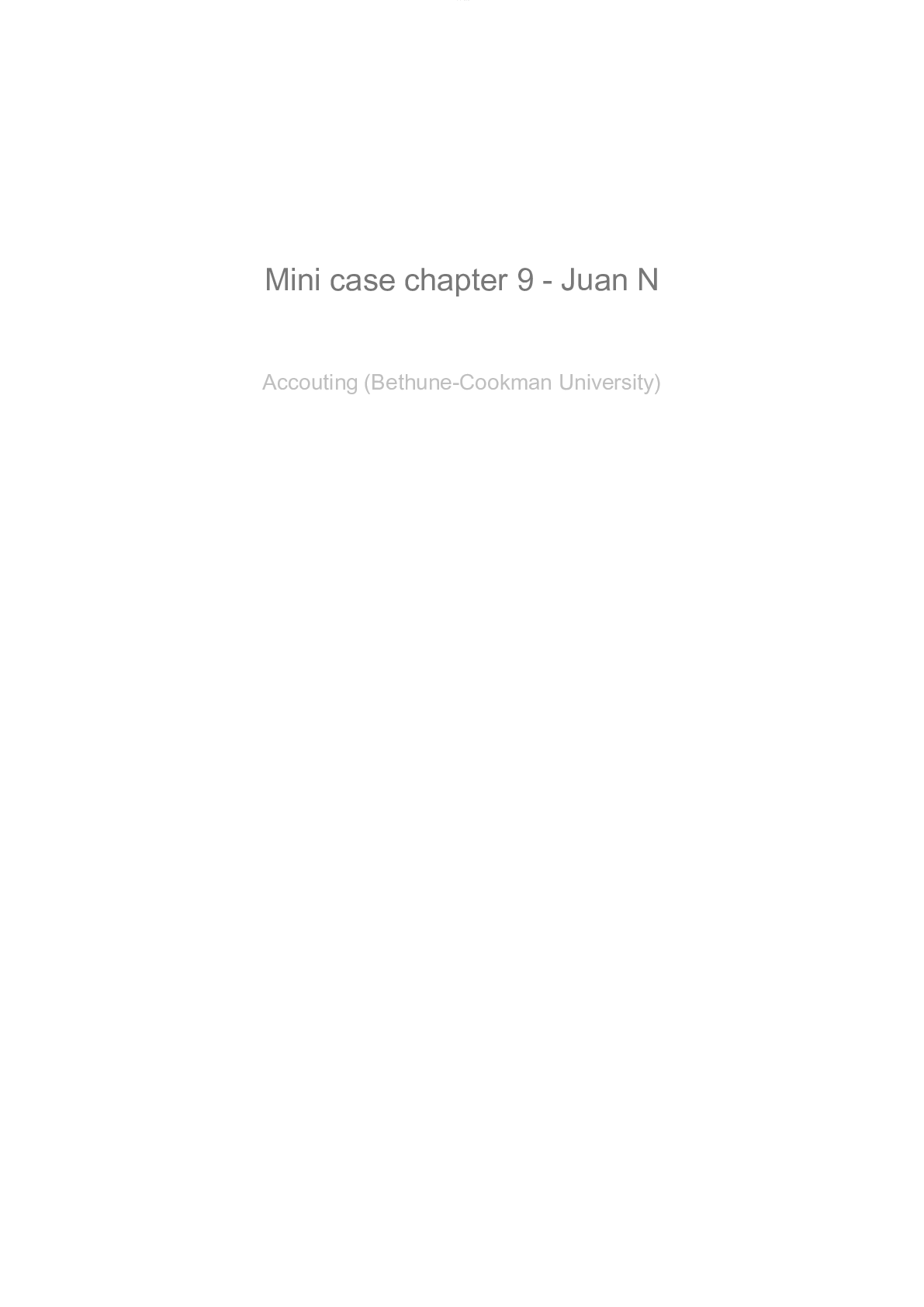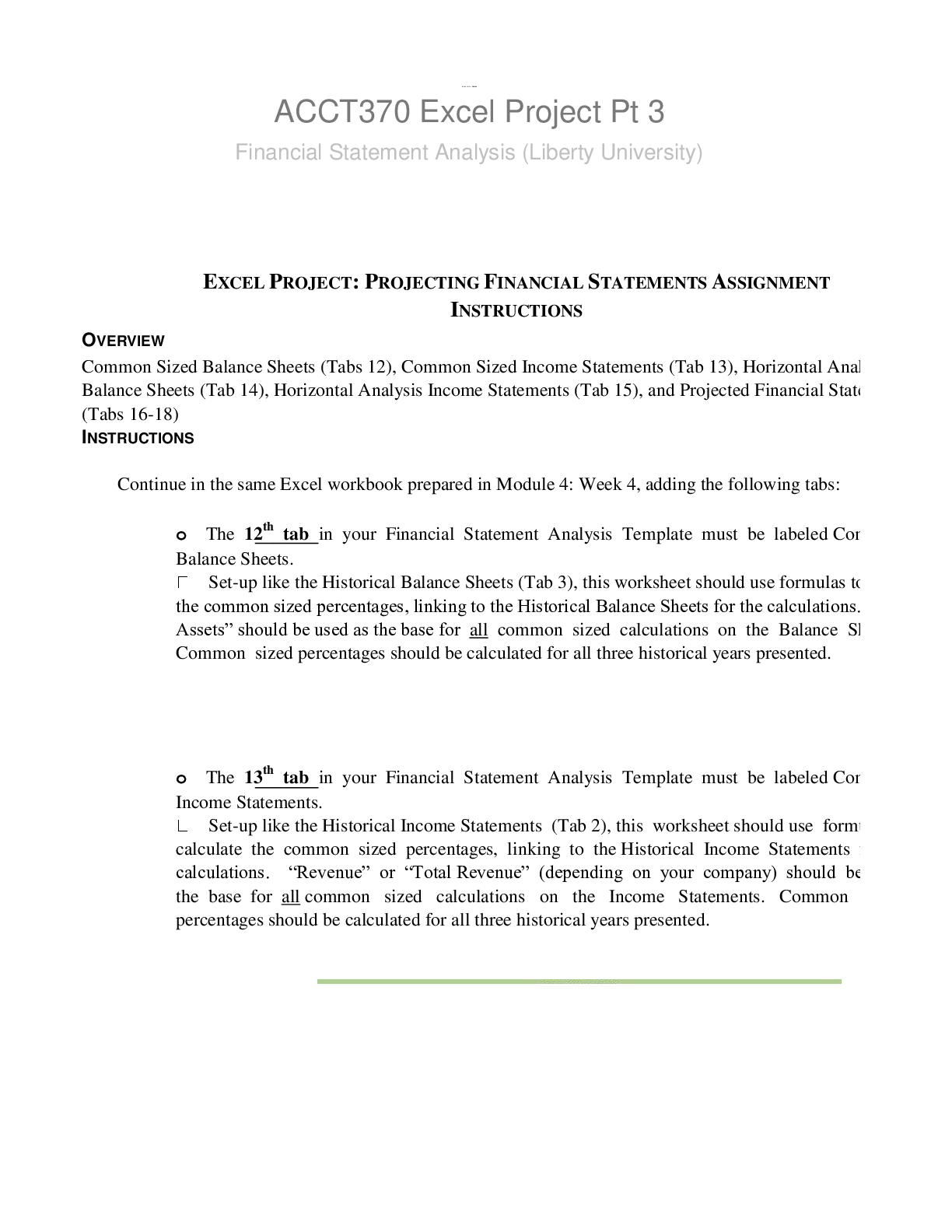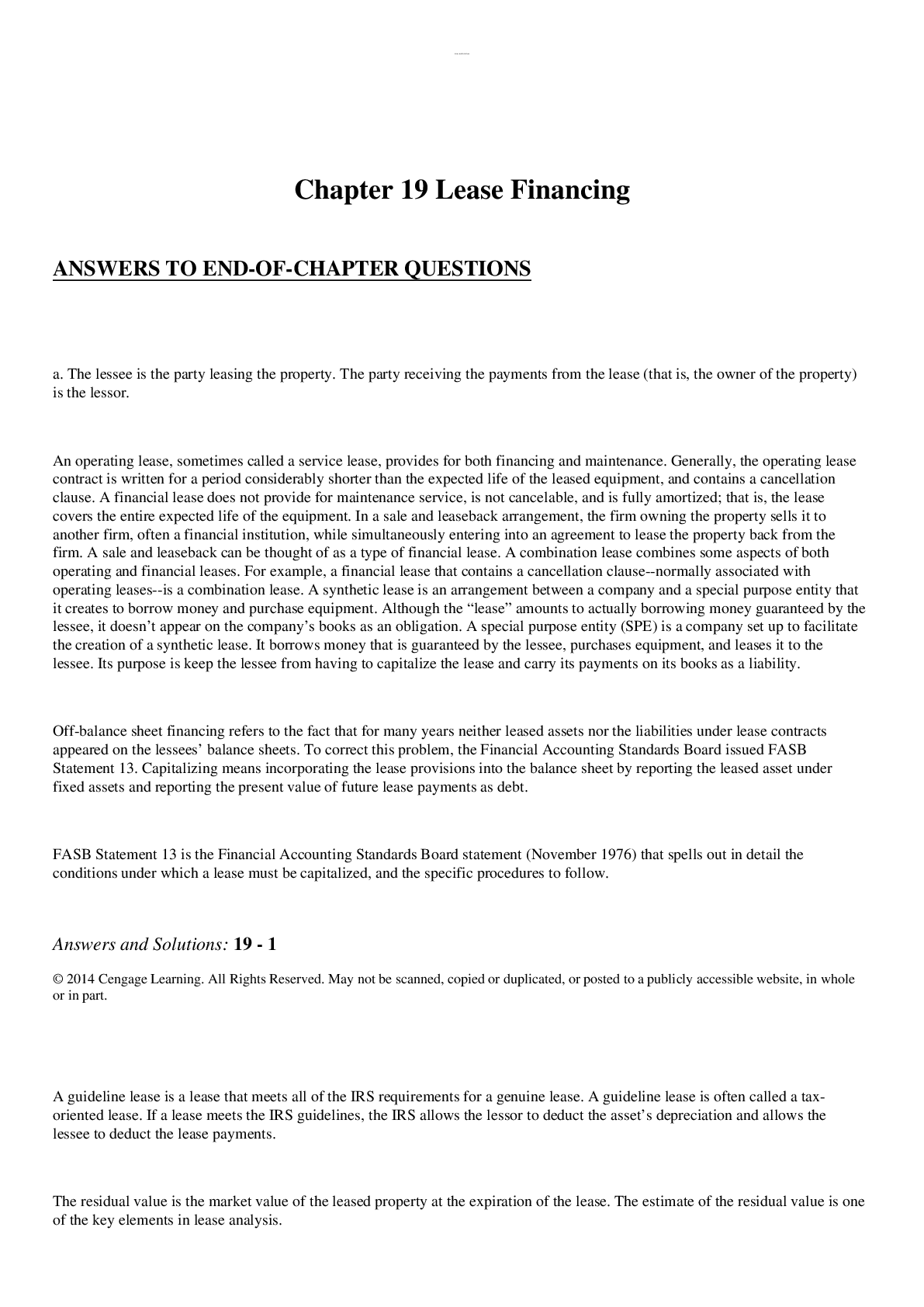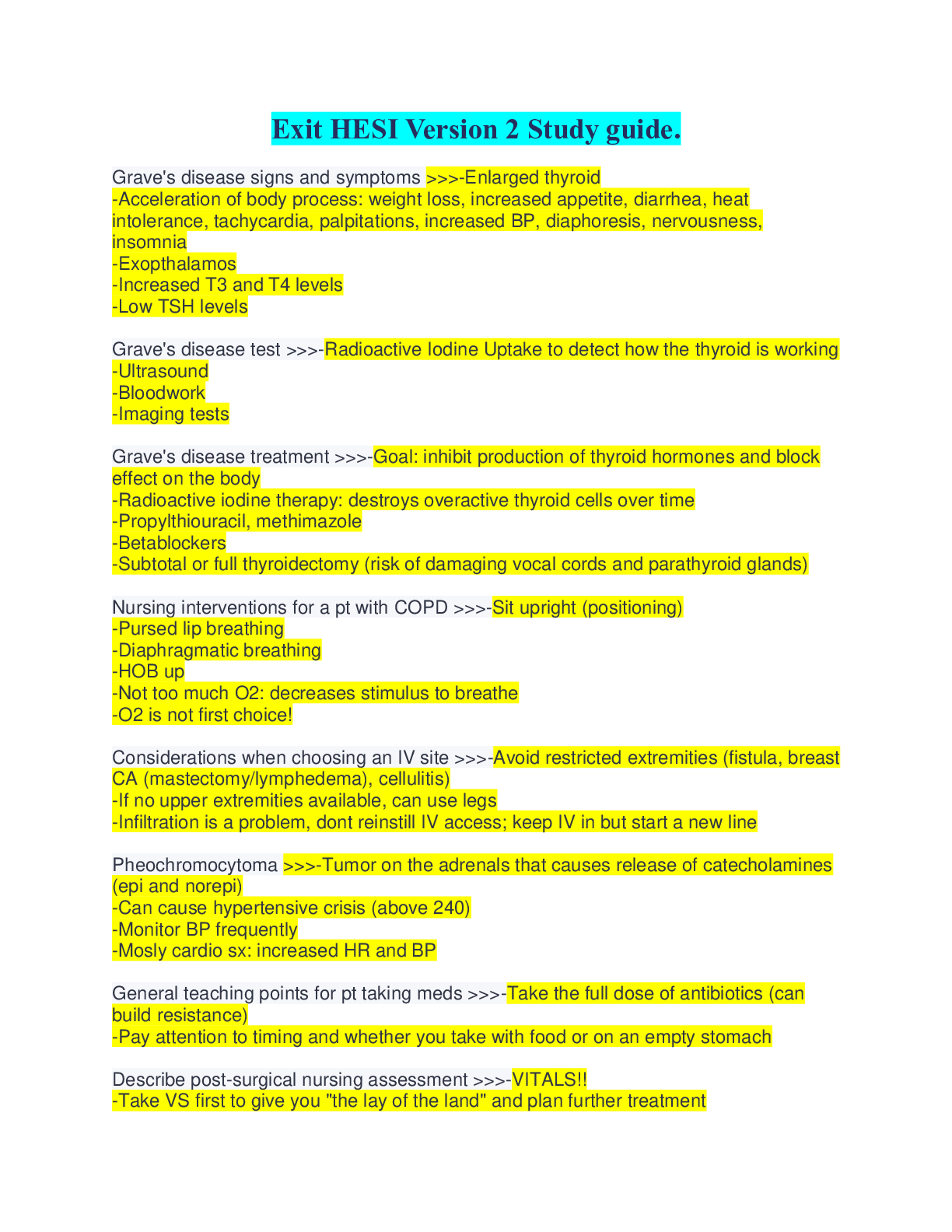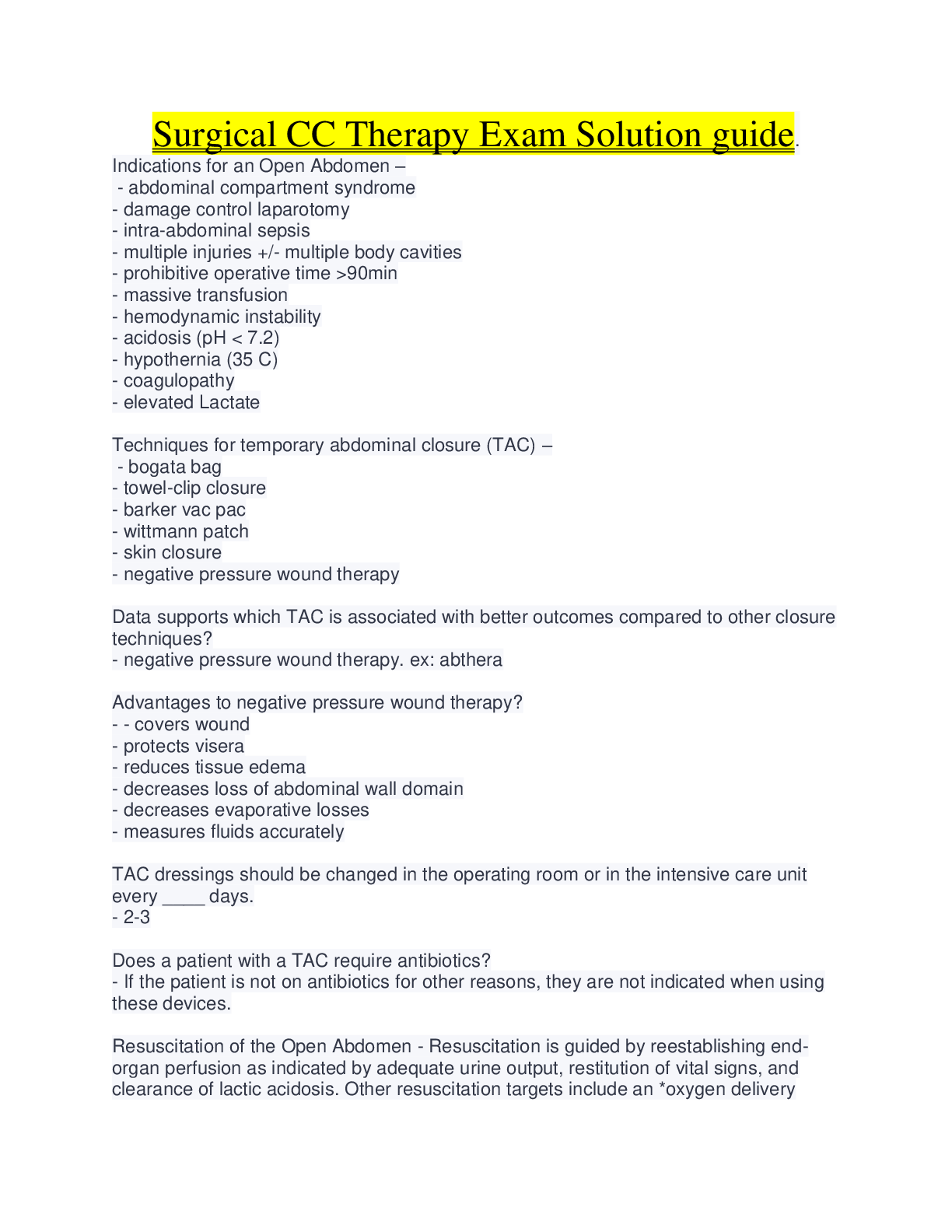Health Care > Solutions Guide > Study Guide for Health Assessment Exam 1 (All)
Study Guide for Health Assessment Exam 1
Document Content and Description Below
Study Guide for Health Assessment Exam 1 Study Guide for Health Assessment Exam 1 Ch. 1-7 Concepts to know CH. 1 Evidence-Based Practice Types of Data • Objective – visibly able to measur... e on a patient o Vital signs, (BP, Pulse) Redness o Observed when inspecting, percussing, palpating and auscultating patient during physical exam • Subjective – aspects that the patient say o Must be in quotations o It is what they say it is o Examples – pain level • Database o Formed from these elements plus patients record and labs Data bases: Complete Database: includes a complete health history and a full physical examination. o collected in a primary care setting such as a pediatric or family practice clinic, independent or group private practice, college health service, women's health care agency, visiting nurse agency, or community health agency Focused or Problem centered: limited or short-term problem. Here you collect a “mini” database, smaller in scope and more targeted than the complete database. It concerns mainly one problem, one cue complex, or one body system o used in all settings—hospital, primary care, or long-term care Follow up: status of any identified problems should be evaluated at regular and appropriate intervals. What change has occurred? Is the problem getting better or worse? Which coping strategies are used? o type of database is used in all settings to follow up both short-term and chronic health Emergency: urgent, rapid collection of crucial information o Life saving measures-- What did you take?” “How much did you take?” and “When?” Evidence based practice • What is this? • Systematic approach to practice that emphasizes the use of best evidence in combination with the clinician's experience, as well as the patient preferences and values, to make decisions about care and treatment • the best evidence from a critical review of research literature; the patient's own preferences; the clinician's own experience and expertise; and finally physical examination and assessment Prioritizing Patients • First-level priority o EMERGENCY, Life threatening, and immediate. o Examples: establishing an airway or supporting breathing. o ABC plus V – Airway, Breathing, Circulation, Vital Sign Change (high fever) • Second-level priority o Next in urgency, requiring attention to avoid further deterioration. o Examples: mental status change, acute pain, acute urinary elimination problems, untreated medical problems, abnormal laboratory values, risks of infection, or risk to safety or security • Third-level priority o Important to patient’s health but can be addressed after more urgent problems are addressed o to treat these problems are more long term, and the response to treatment is expected to take more time. o Examples: Problems with lack of knowledge, activity, rest, or family-coping • Collaborative Problems o Approach to treatment involving multiple disciplines. o Examples: Alcohol withdrawal patients and pregnant mothers. Using critical thinking and nursing process Nursing Process ADPIE – Assessment, Diagnosis, Planning, Implementation, Evaluation 1. Assessment • Collection of Data to make clusters of cues to make infrences • Can be acquired from: Clinical record, interview, health history, physical exam, functional assessment, cultural and spiritual exam, consultation, and research 2. Diagnosis • Interpretation of data • Identify and compare clusters of cues with definitions and defining characteristics • Validation of inferences • Document the diagnoses 3. Outcome Identification • Identify expected outcomes related to patient individualization • Ensuring outcomes are realistic and measurable • Specify short and long term goals 4. Planning • Establish prioritize • Develop outcomes and set time frames for meeting outcomes • Identify relevant interventions and utilize health care team members in the care of the pt • Document plan of care 5. Implementation • Determine patient readiness and involve the patient in health care process • Document care provided • Review planned interventions with health care team • Utilize principles of delegation • Counsel person and significant others • Refer for continuing care 6. Evaluation • Refer to established outcomes • Compare pts condition and outcomes with expected outcomes • Summarize results • Identify reasons for failures • Document evaluation in care plan Critical Thinking • Use an Organized systemic assessment format • Clustering – distinguish relevant signs and symptoms • Validate and confirm findings based on nonjudgmental interpretation of data. Holistic Health • Body, mind, and spirit are independent and function as a whole. Health Promotion • Aspects that can promote health of a patient • Nurse educates the patient on these aspects • Examples – Exercise, healthy eating • Health promotion is a set of positive acts that we can take Health Prevention • Measures that can be done to prevent an oncoming illness/disease • Smoking • Prevention can be achieved through counseling from primary care providers designed to change people's unhealthy behaviors related to smoking, alcohol and other drug use, lack of exercise, poor nutrition, injuries, and sexually transmitted infections. CH. 2 Cultural Competence Culture • pattern of shared attitudes, beliefs, self-definitions, norms, roles, and values that can occur among those who speak a particular language or live in a defined geographic region • four basic characteristics: 1. Learned from birth through the processes of language acquisition and socialization 2. Shared by all members of the same cultural group 3. Adapted to specific conditions related to environmental and technical factors and to the availability of natural resources 4. Dynamic and ever changing Ethnicity • a social group that may possess shared traits such as a common geographic origin, migratory status, religion, language, values, traditions or symbols, and food preferences Heritage Assessment • important to ask the questions slowly over time. If the person appears anxious, it is best to postpone asking the questions or to weave them into other parts of the health history. The responses can be scored, and an image arises as to whether the person identifies with his or her traditional heritage or whether he or she is acculturated and assimilated into the mainstream of modern American culture. • • Questions you can also ask: 1. Do you mostly participate in social activities with members of your family? 2. Do you mostly have friends from a similar cultural background as you? 3. Do you mostly eat the foods of your family's tradition? 4. Do you mostly participate in the religious traditions of your family? o If the person answers two to four of these questions positively, the probability of being more likely to use health practices relevant to their traditional heritage is high. Perspectives of Illness • Naturalistic or holistic o the forces of nature must be kept in natural balance or harmony o Life is only one aspect of nature and a part of the general order of the cosmos o Yin/yang theory, in which health exists when all aspects of the person are in perfect balance Yin energy represents the female and negative forces such as emptiness, darkness, and cold, whereas yang forces are male and positive, emitting warmth and fullness. • Biomedical or scientific o assumes that all events in life have a cause and effect, that the human body functions more or less mechanically o all of reality can be observed and measured o life can be reduced or divided into smaller parts • Magicoreligious o world is an arena in which supernatural forces dominate. o The fate of the world and those in it depends on the action of supernatural forces for good or evil Ch. 3 The interview: Communication Techniques • Open Ended Questions – ask for narrative answers • Closed or Direct Questions – Ask for specific information • Therapeutic: be able to listen, offer non-judgmental tone • Non-therapeutic: cutting the PT off, judgmental tone, not listening to PT concern • Do’s and Don’ts • Don’ts: 1. Providing False Assurance or Reassurance: “I’m sure the baby will be fine.” 2. Giving Unwanted Advice: “If I were you…” 3. Using Authority: “Your doctor/nurse knows best.” 4. Using avoidance language: “He has gone to a better place” 5. Distancing: “There is a lump in the left breast.” 6. Using Professional Jargon: “Hypertensive—Pt might think this means when they are tense” 7. Using leading or Biased Questions: “You don’t smoke, do you?” 8. Talking too much: Listen more than you talk 9. Interrupting: cutting the patient off and not letting them complete their statement 10. Using why questions: “Why did it take you so long to come to the ER?” • Note Taking During an Interview o Proper - recording you do should be secondary to the dialogue and should not interfere with the person's spontaneity o Improper - excessive note-taking during the interview has disadvantages: • It breaks eye contact too often. • It shifts your attention away from the person, diminishing his or her sense of importance. • Trying to record everything a person says may cause you to ask him or her to slow down, or the person may slow his or her tempo to allow for you to take notes. Either way, the client's natural mode of expression is lost. • It impedes your observation of the client's nonverbal behavior. o • It is threatening to the client during the discussion of sensitive issues [Show More]
Last updated: 1 year ago
Preview 1 out of 13 pages
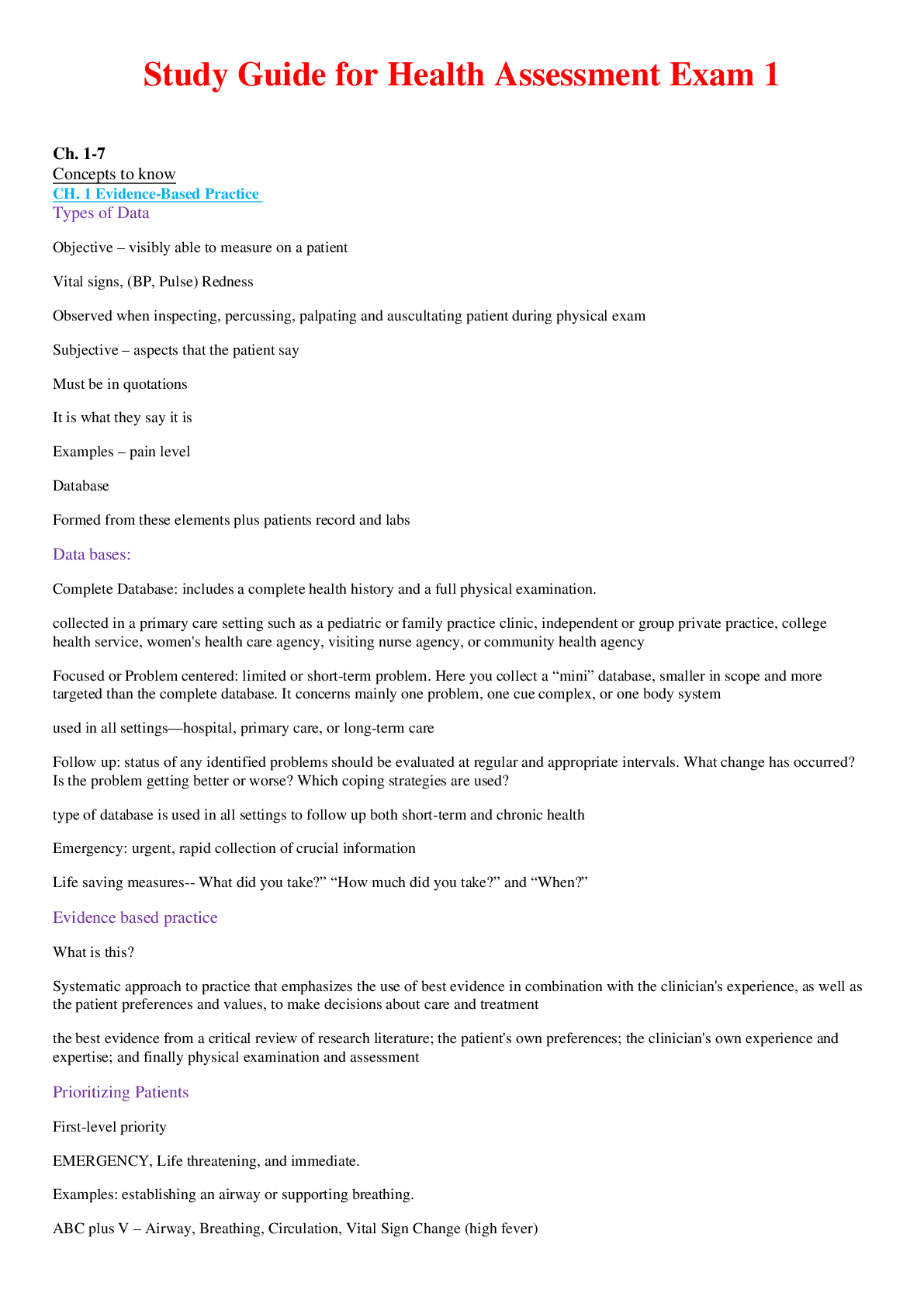
Reviews( 0 )
Document information
Connected school, study & course
About the document
Uploaded On
Oct 28, 2022
Number of pages
13
Written in
Additional information
This document has been written for:
Uploaded
Oct 28, 2022
Downloads
0
Views
50

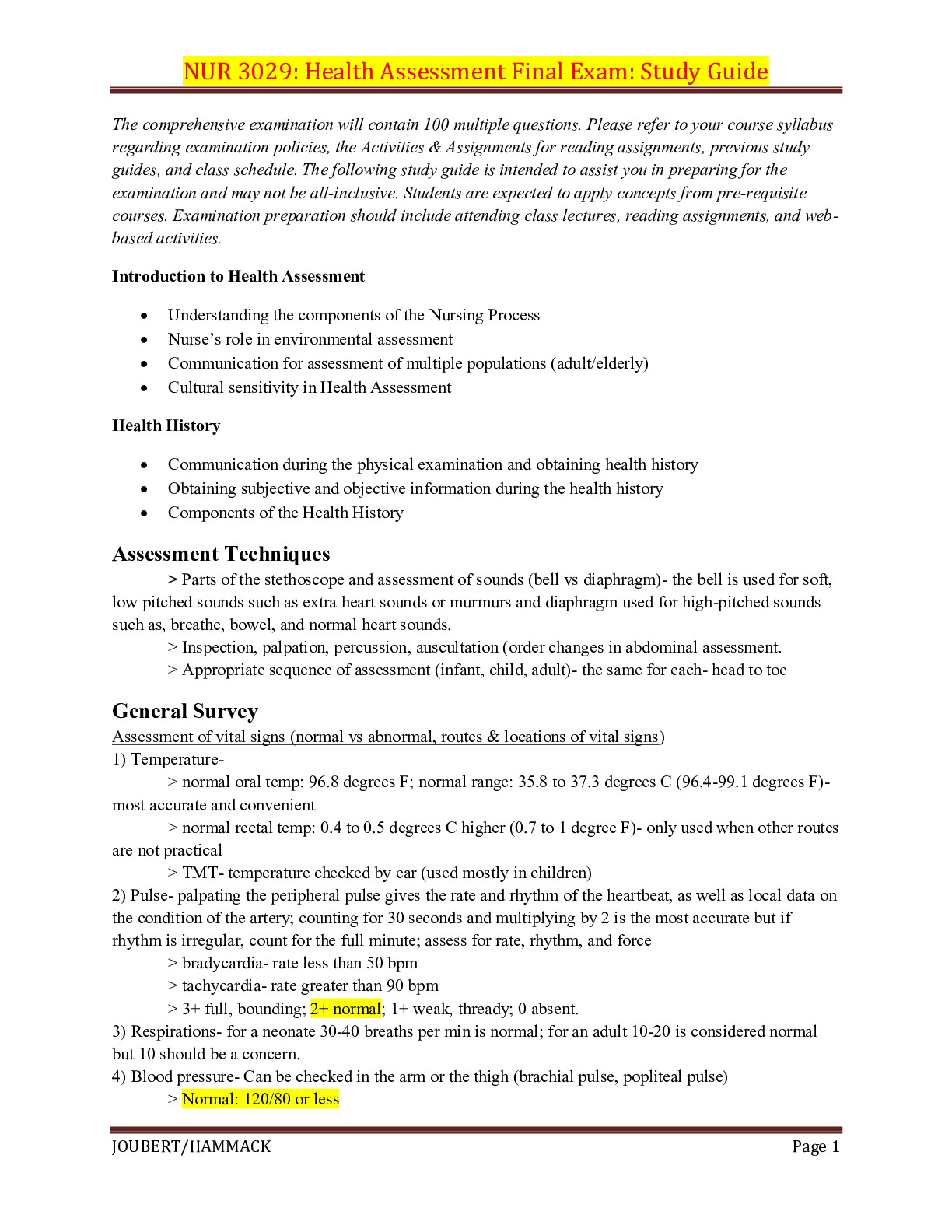
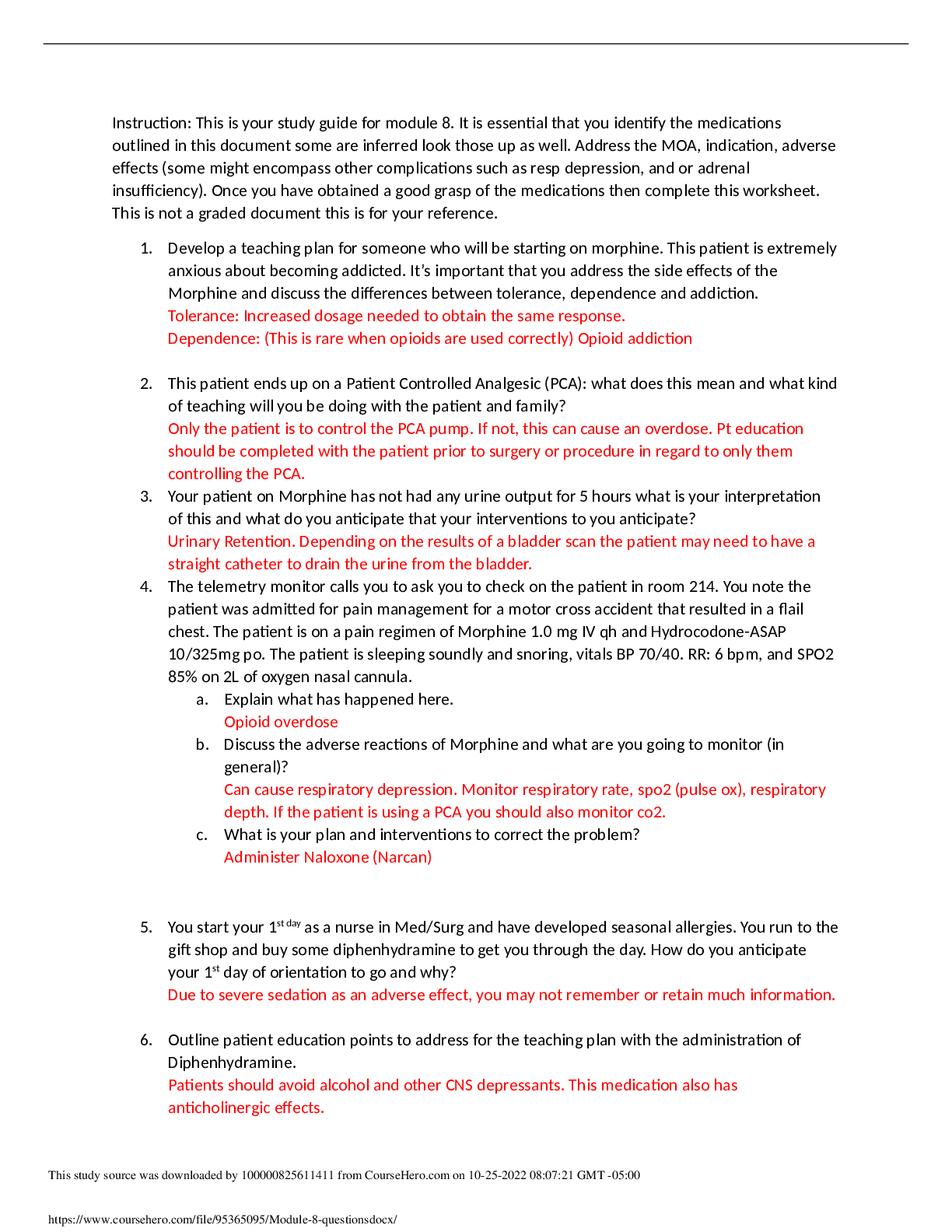
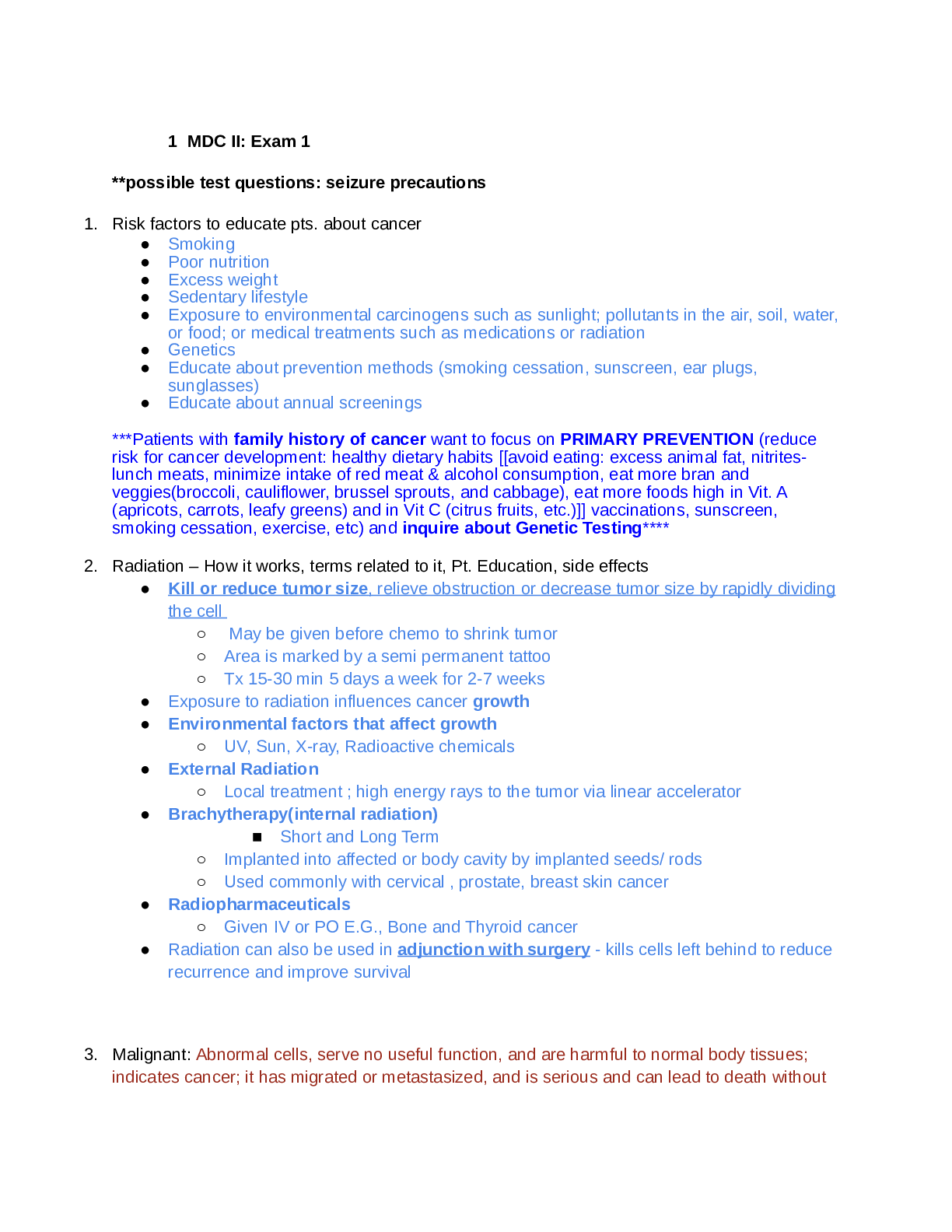
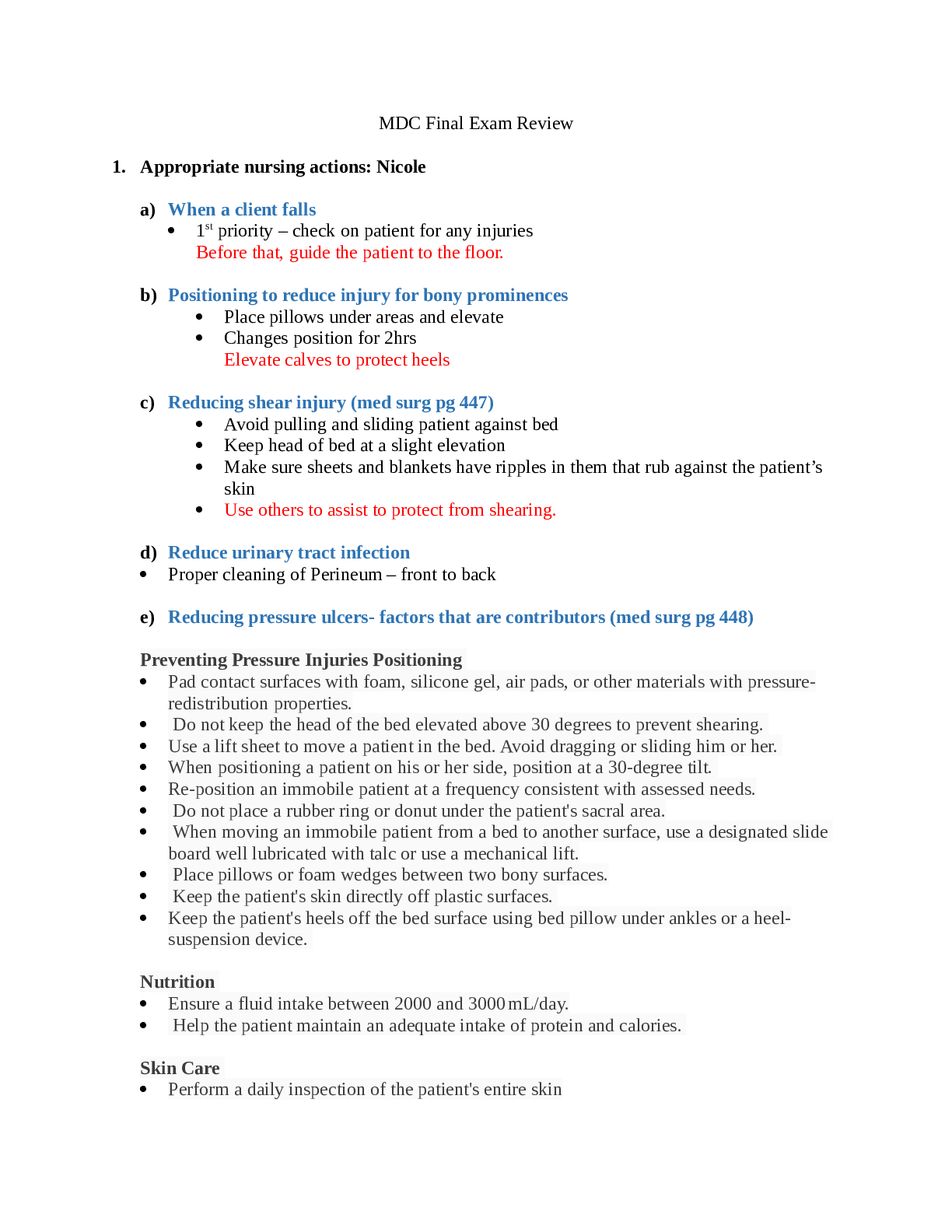

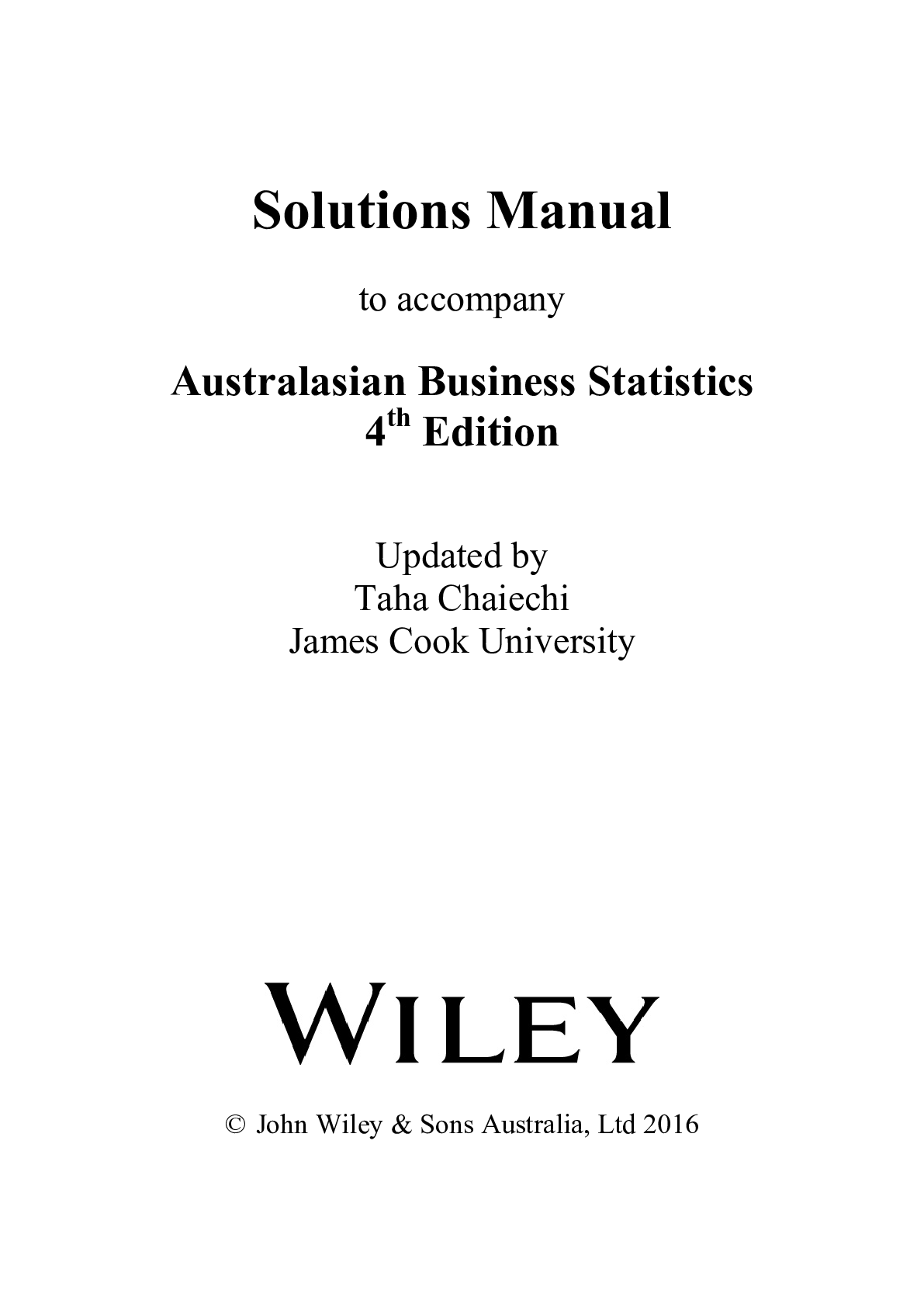

.png)
